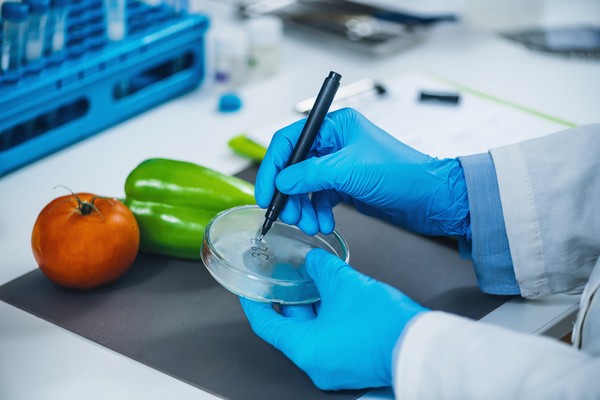This week’s PMA virtual town hall discussed putting root-cause strategies into the hands of the produce industry when it comes to investigating, but ultimately preventing, events such as mass recalls of produce.
The town hall was moderated by Trevor Suslow, produce safety consultant with the PMA and emeritus extension research specialist with UC Davis, who discussed the approach once an issue such as a foodborne illness presents itself. “It starts with defining the problems, the questions and identifying factors related to each of those,” he says. “I always start with: what was different this time? You’ve been doing the same thing for years. It often points to something being very different.”
As Suslow notes, it helps generate a potential hypothesis. “Once you have that clear handle on the problem, you establish your timeline and select the tools that seem to fit—rarely one approach is adequate,” he says. “You assemble the data and look for those connections.” He also says soft skills come into play by asking questions of the right people. “This often doesn’t come through in teaching root cause analysis—a lot of trust that makes the difference.”
Dr. Kurt Nolte, produce safety expert with the FDA added that there are a variety of tools used to investigate situations, many of which growers can learn from and possibly adopt.
Prevention first
That said, prevention is a place to start. “We as an agency take outbreaks extremely seriously and as a result of every outbreak that we do, we try and improve to get ready for the next one,” says Nolte, who as an example noted the more recent romaine lettuce E. coli outbreaks that occurred March 2018 in Arizona, November 2018 in Santa Maria, November 2019 in Salinas and Salinas again in 2020.
Before even traveling to the site of the outbreak or issue, approaching the problem begins by laying it out, says Nolte. “We discuss in a very very deep way how and why and where we’re going to go and consider budgets, people’s scheduling, the commitment we have, what type of activities are we going to do. Are we going to spend several months in the field? Or a few days? What limitations are we going to face—are we going onto someone’s property?” says Nolte, adding these are things growers might consider when conducting their investigations.
From there the team also determines the parameters of the problem—what it is, what is the scope and what the team is going to do. This in turn leads to an assignment. “Before we have boots on the ground, we know exactly what we’re going to do,” says Nolte. “Developing a plan is extremely valuable for us in the field. We don’t necessarily think on the fly if we have a lot of good planning ahead or behind us.”
Numerous tools to use
Then at the farm level, a variety of tools could be called on, such as questionnaires for employees. “It’s more than just collecting environmental samples,” says Nolte. “It’s scientific data gathering activity but it’s also evaluating contributing factors such as understanding the farming operation, the process, etc. We try to understand all the processes.”
Dr. Michelle Danyluk with the University of Florida also walked through the process of tracking pathogens and outlined what considerations growers may want to take if they pursue this step.
“You’ve thought about all your potential roots of contamination and in this example, let’s say you decided your soil amendments might have been the potential cause of your contamination. What happens next? How do you handle looking at them and determining if they’re a problem?” Danyluk says.
This likely involves testing soil samples. “But there are considerations around what you’re sampling and what do methods look like,” she says. After all, significant variables can affect the results—such as where in a manure pile you pull a sample from or what time frame you’re sampling in. “Also, how does seasonality or the age of those piles play into this. Those are going to make differences in your results,” she notes.
Other considerations
Methods also need to be considered as well as the type of pathogens. “E. coli is more difficult than salmonella to pull out of different environments,” Danyluk notes. In an example she cites was a study of 13 different farms across Texas, Alabama, Georgia and Florida. In all, 490 samples from 70 piles were pulled. “Only seven percent of the samples were positive for salmonella. We had a lot of samples and it speaks to the need to pull a number of samples to show if something is going on,” she says.
Danyluk also touched on the fact that growers need to consider how much of this investigation they’d like to handle themselves. “You have to think about your operation and if you’re comfortable doing this or do you need to reach out to other resources in your state to help you because there are a lot of nuances going into sampling,” she says.
Finally, Suslow, citing a produce example involving Brussels sprouts and E. coli, noted that a subsequent investigation pointed to a number of factors contributing to the problem. These included animal management near the storage of harvest equipment as well as flaws in the cleaning and sanitation of a sorting machine within the farm.
While the investigation was clearly key in solving the issue, more important was the front-loaded work, says Suslow. “If they hadn’t committed to an advanced testing program pre-season, they wouldn’t have known about this,” he says. “It’s about developing practical everyday approaches as to what you’re going to do.”
Next week’s PMA virtual town hall will look at top talent trends and how companies need to adapt and how that affects the way the industry recruits and retains talent.










